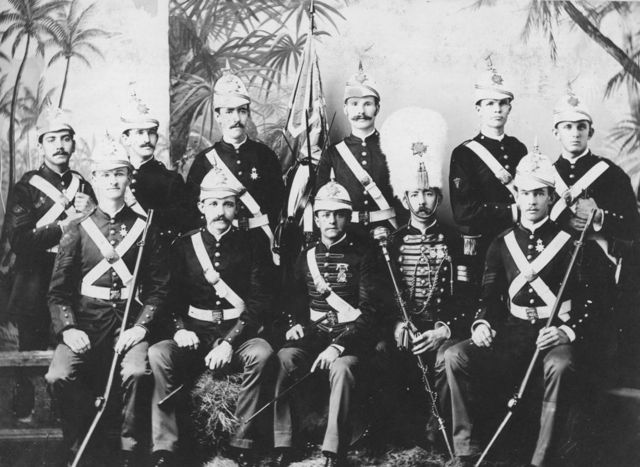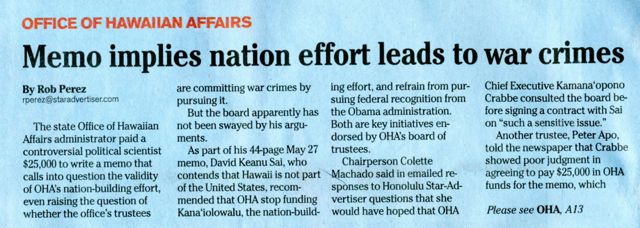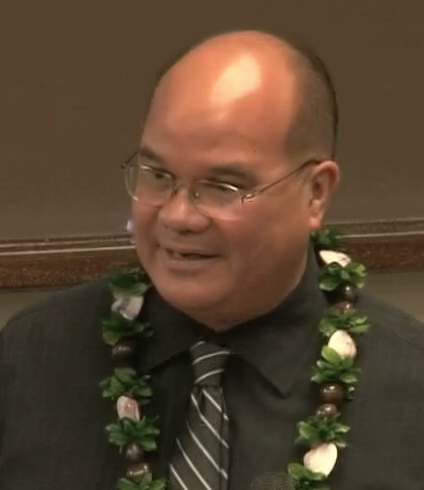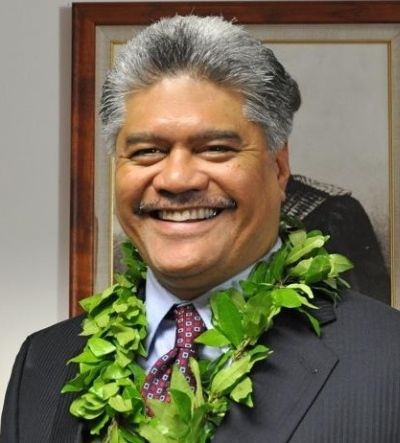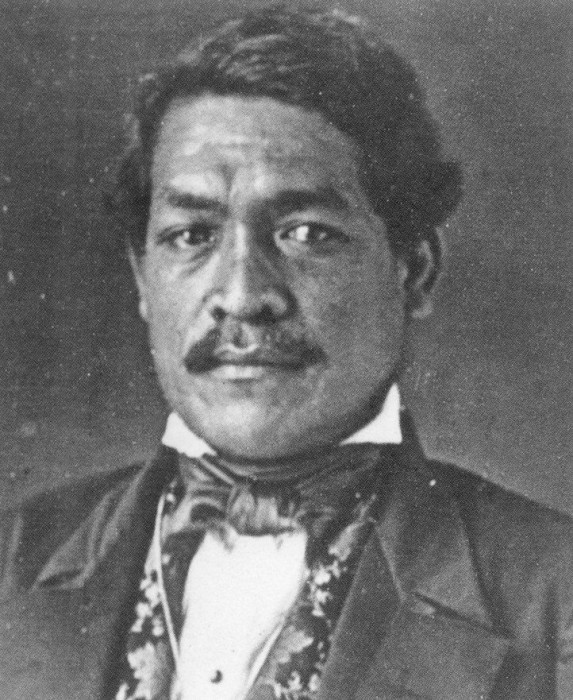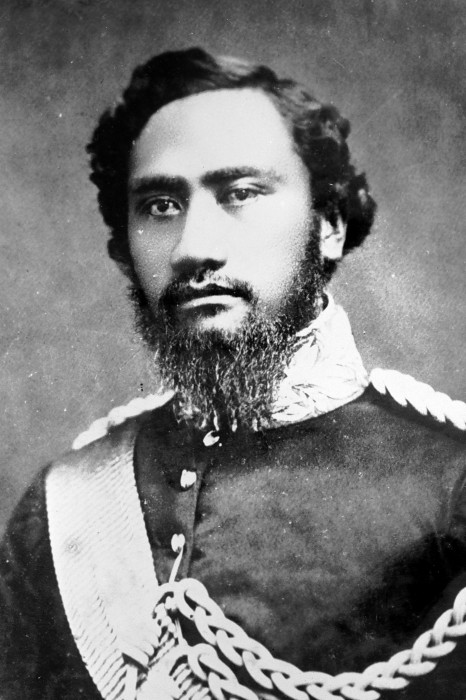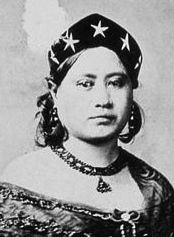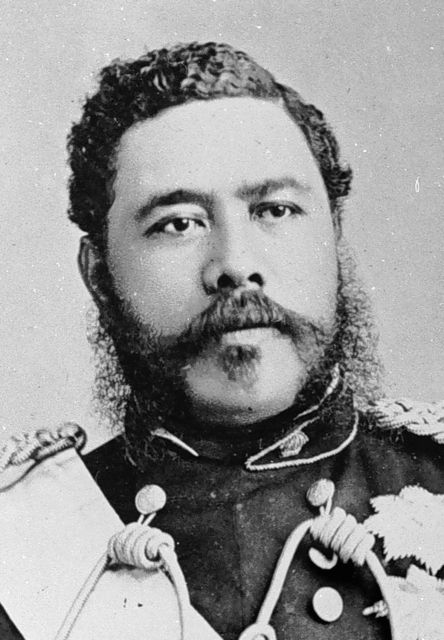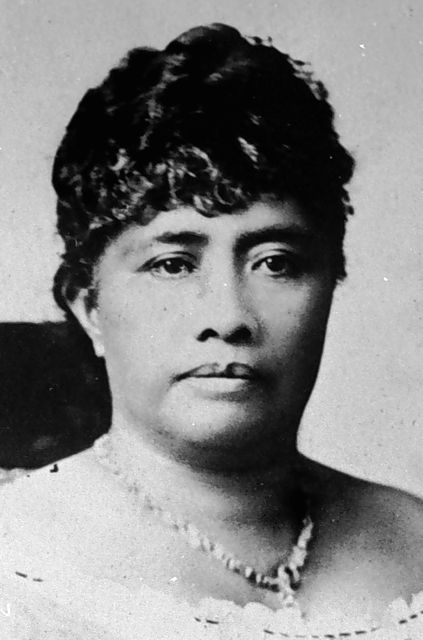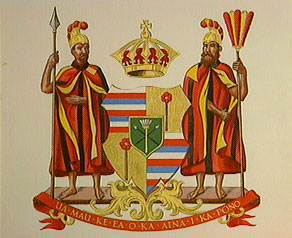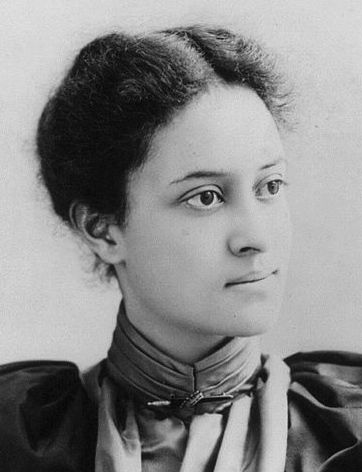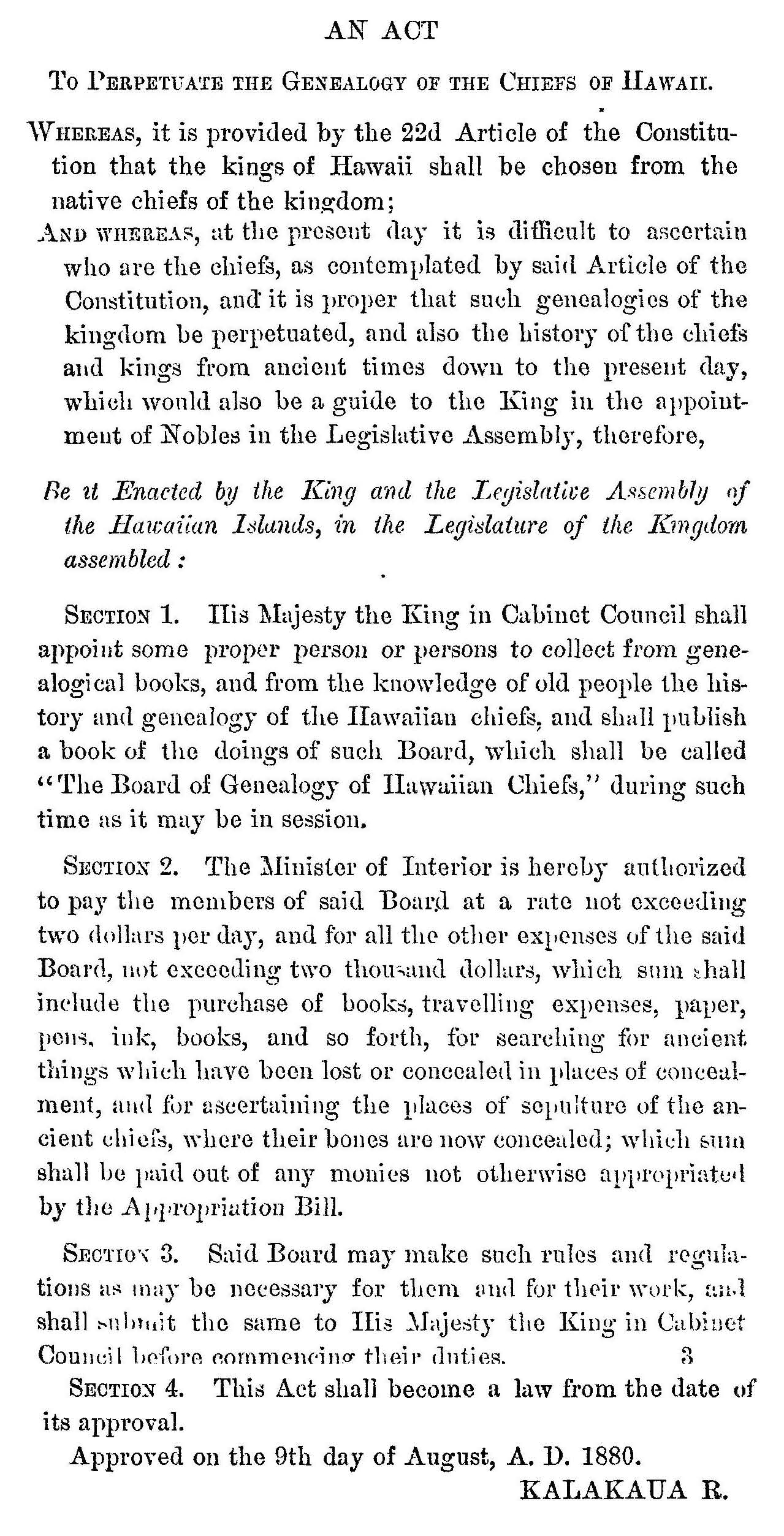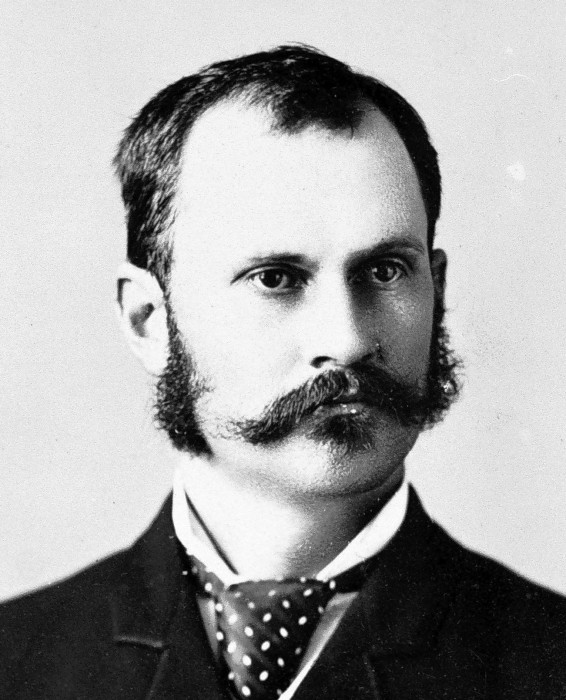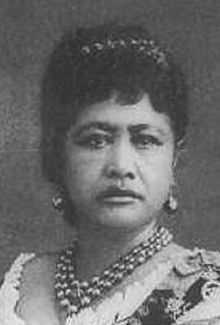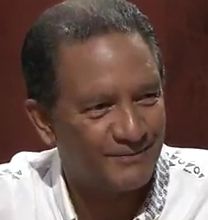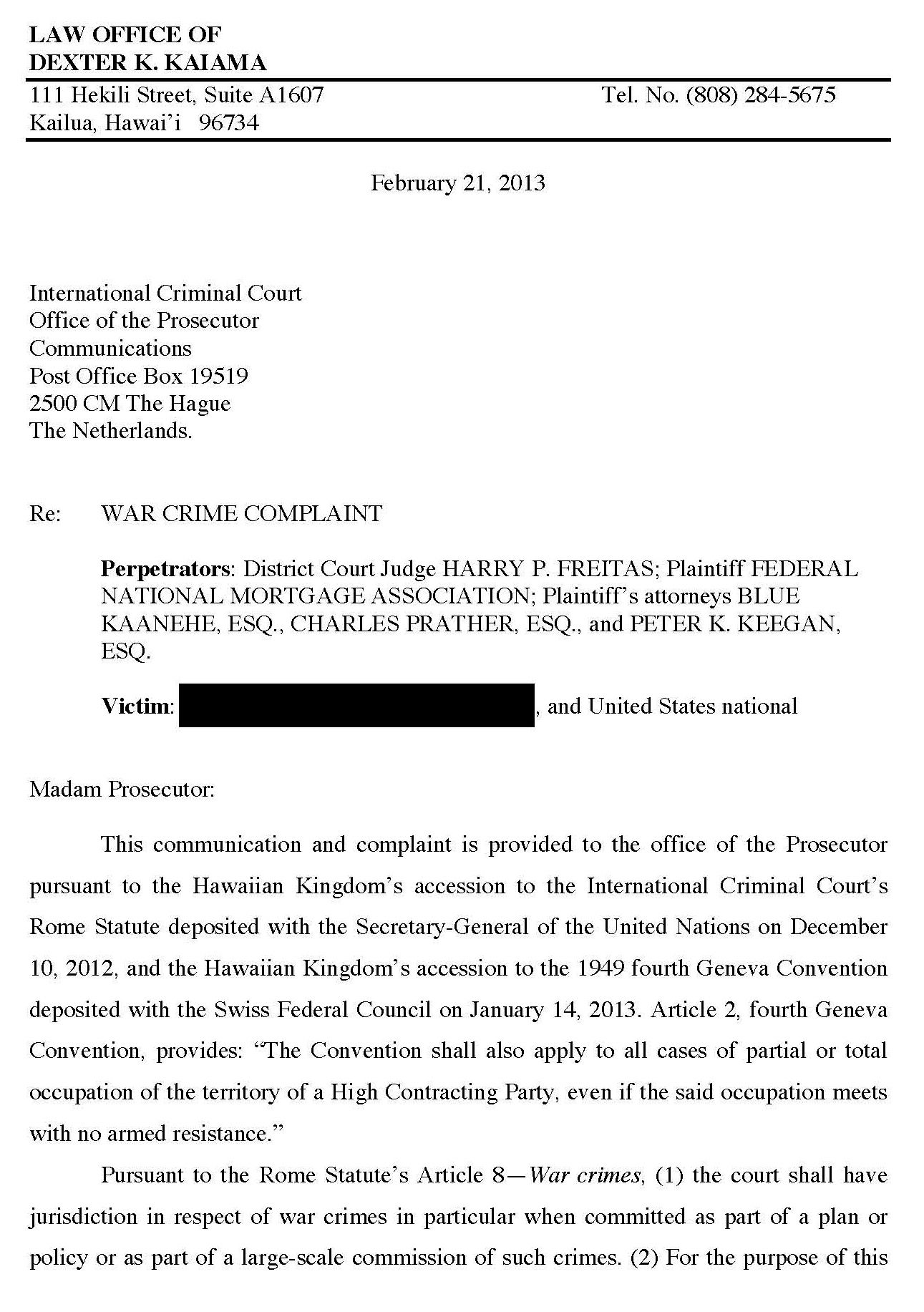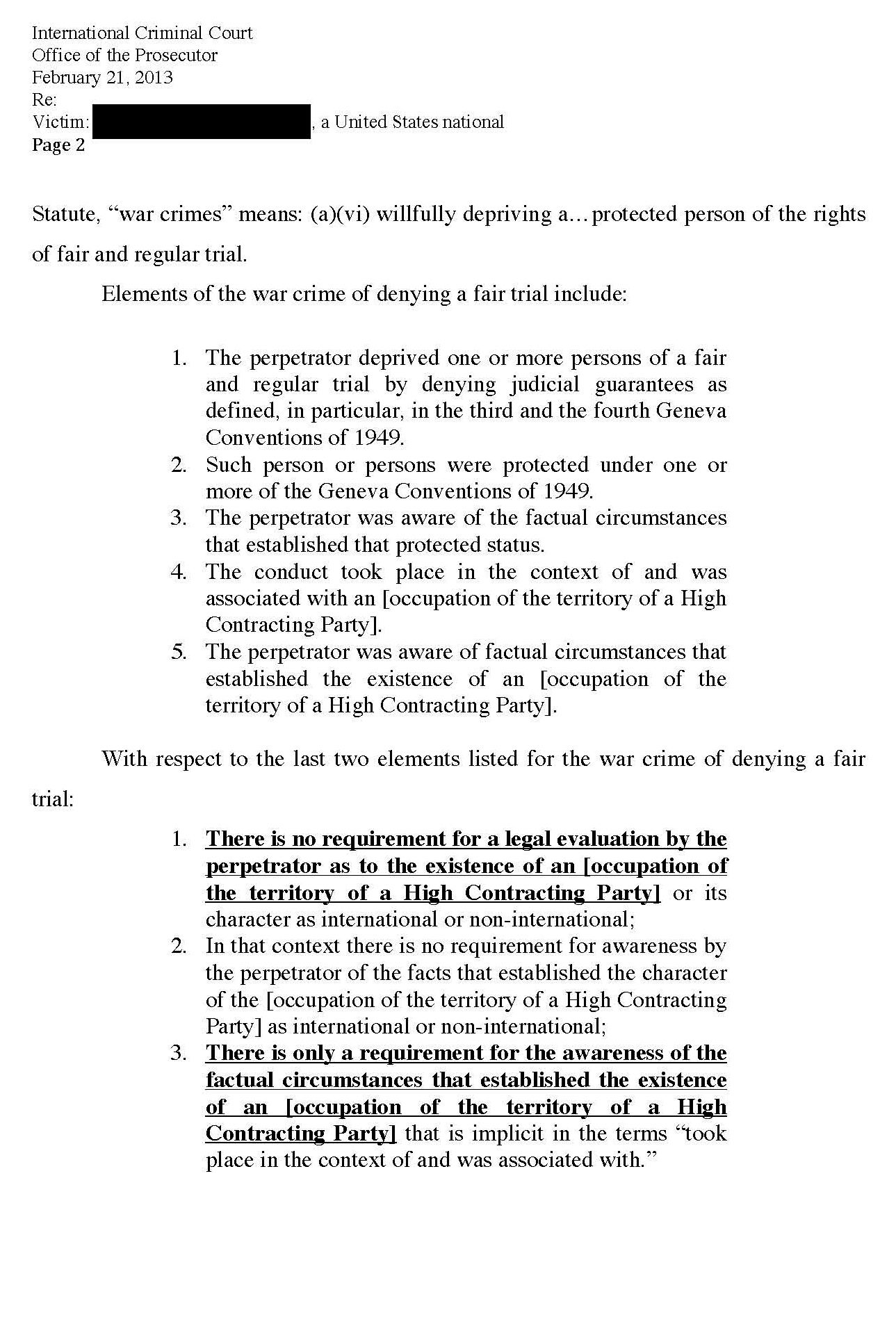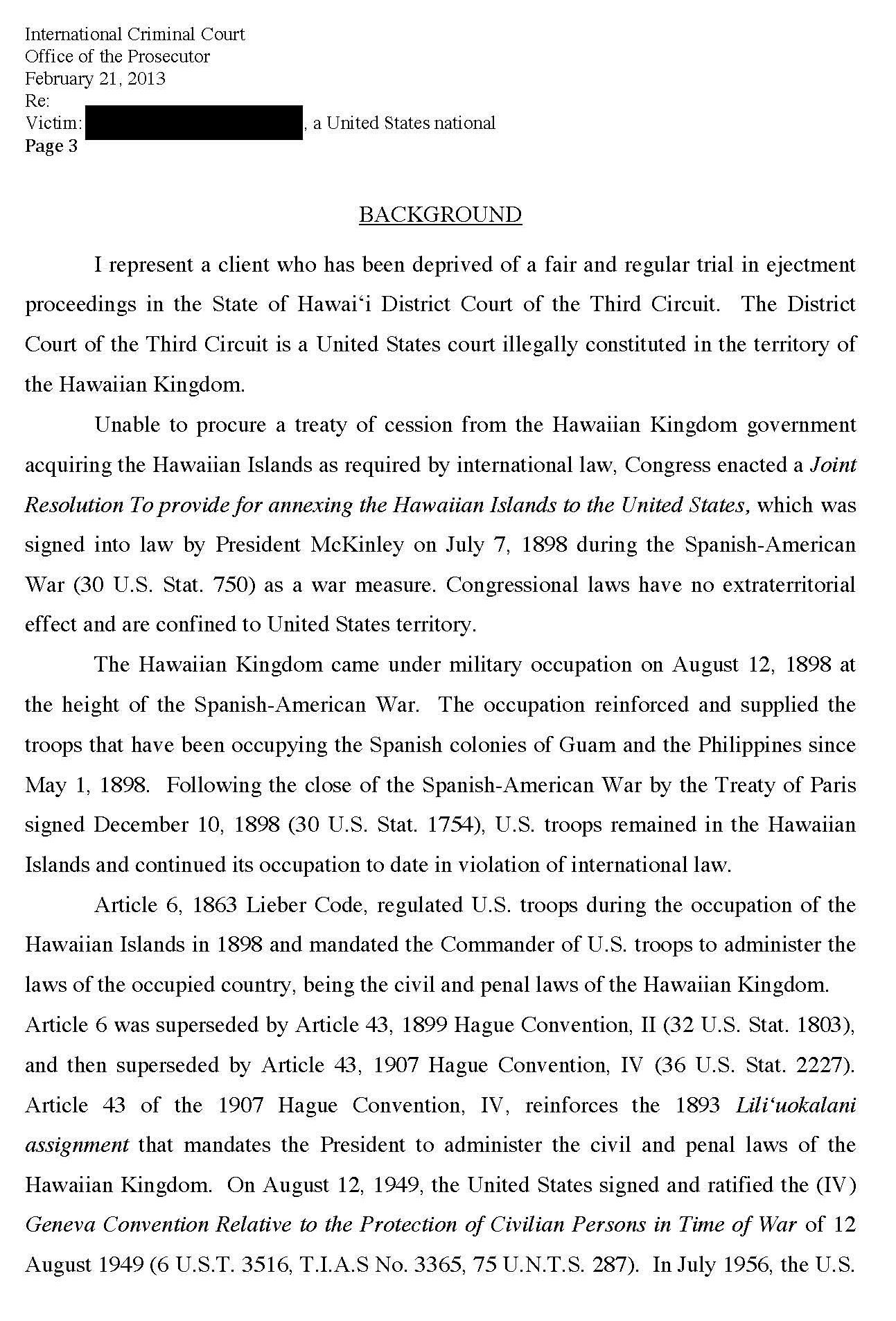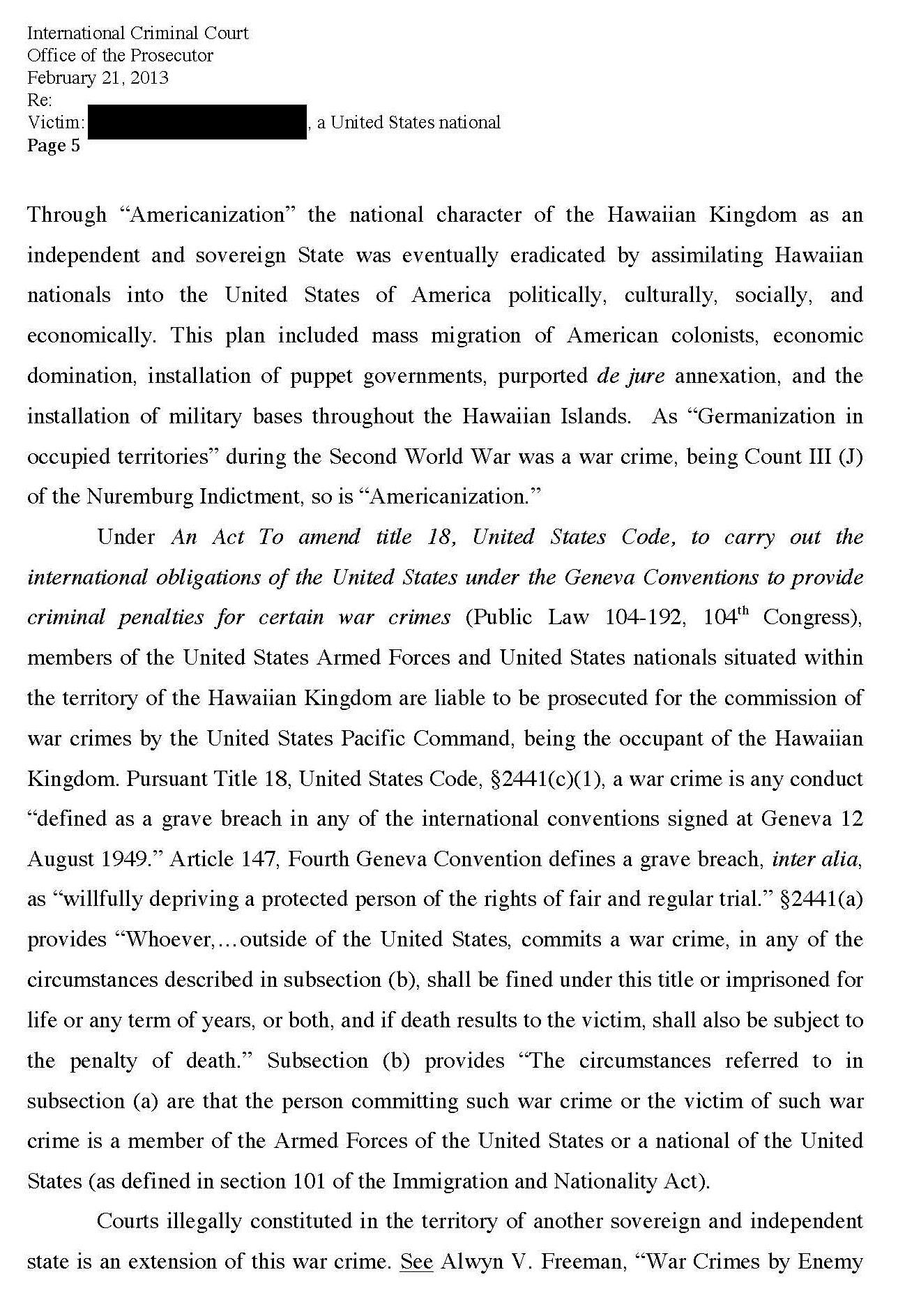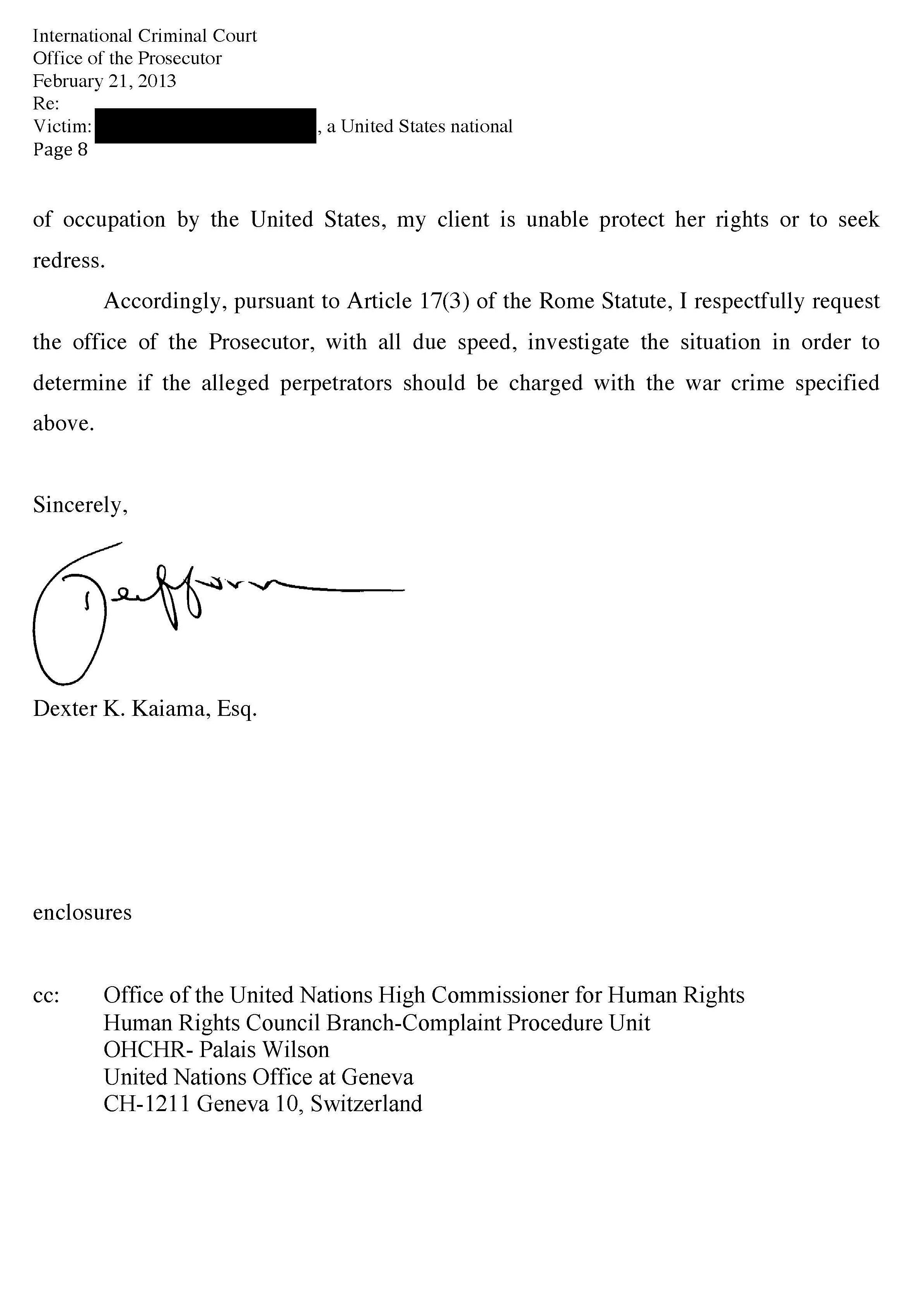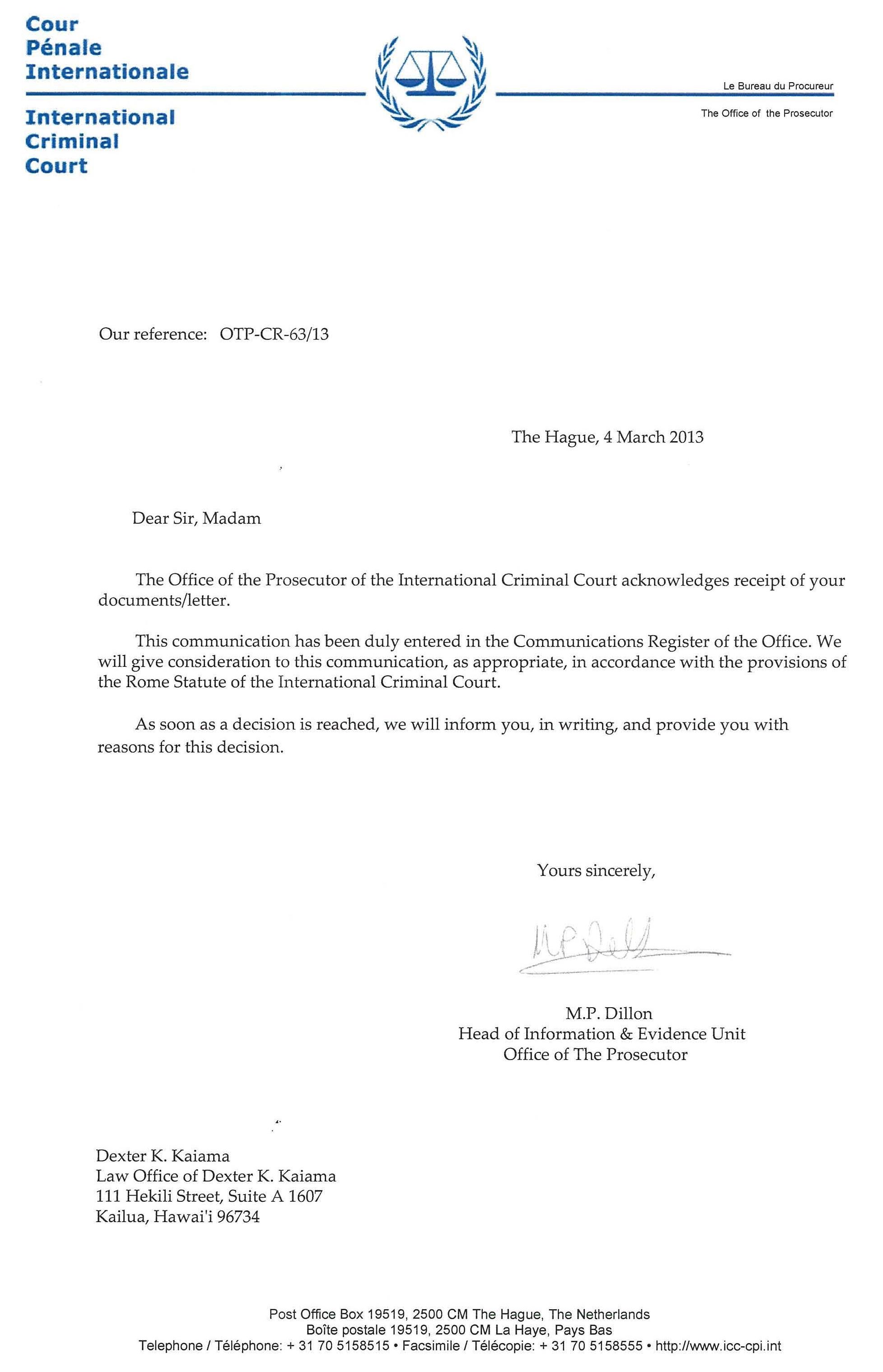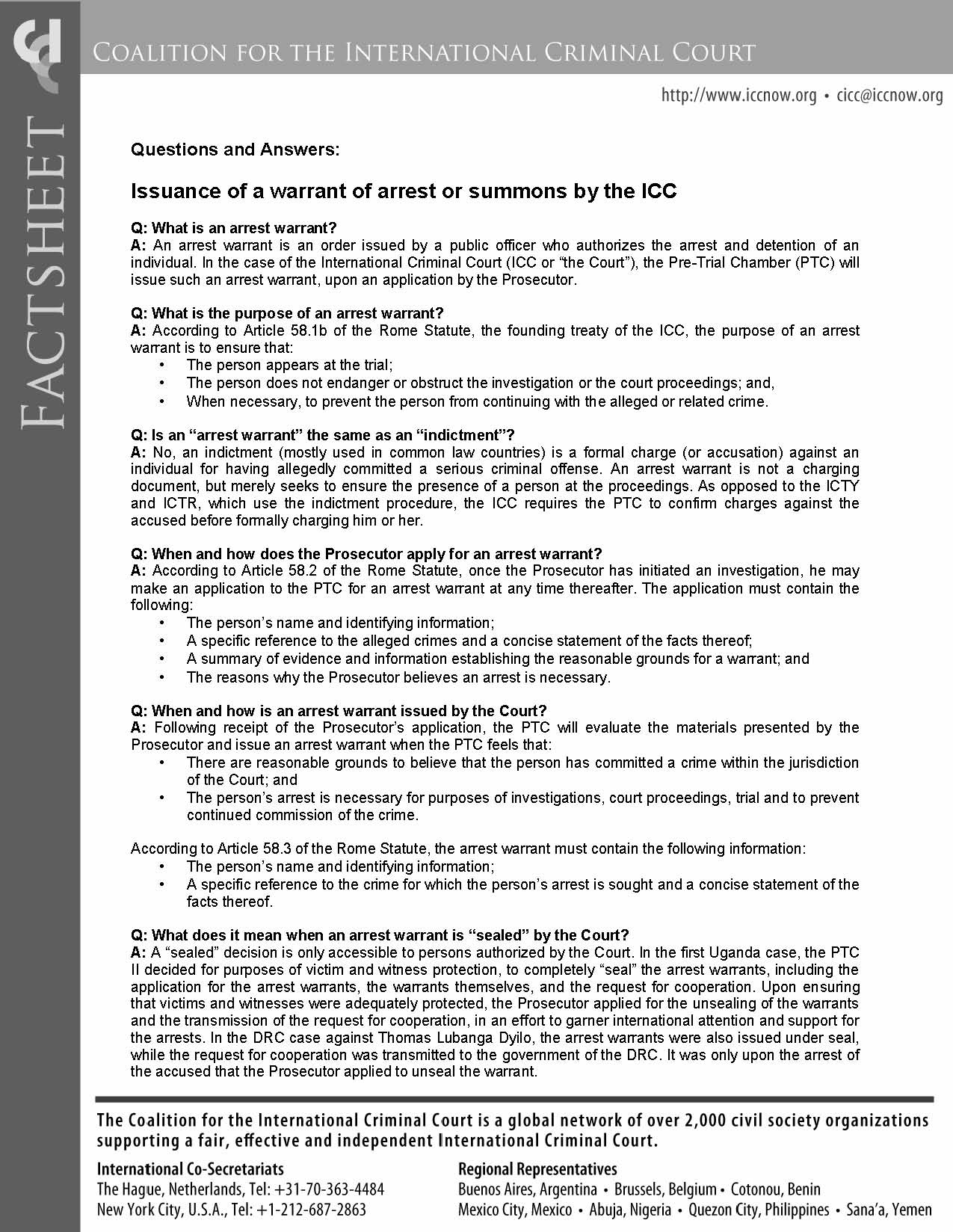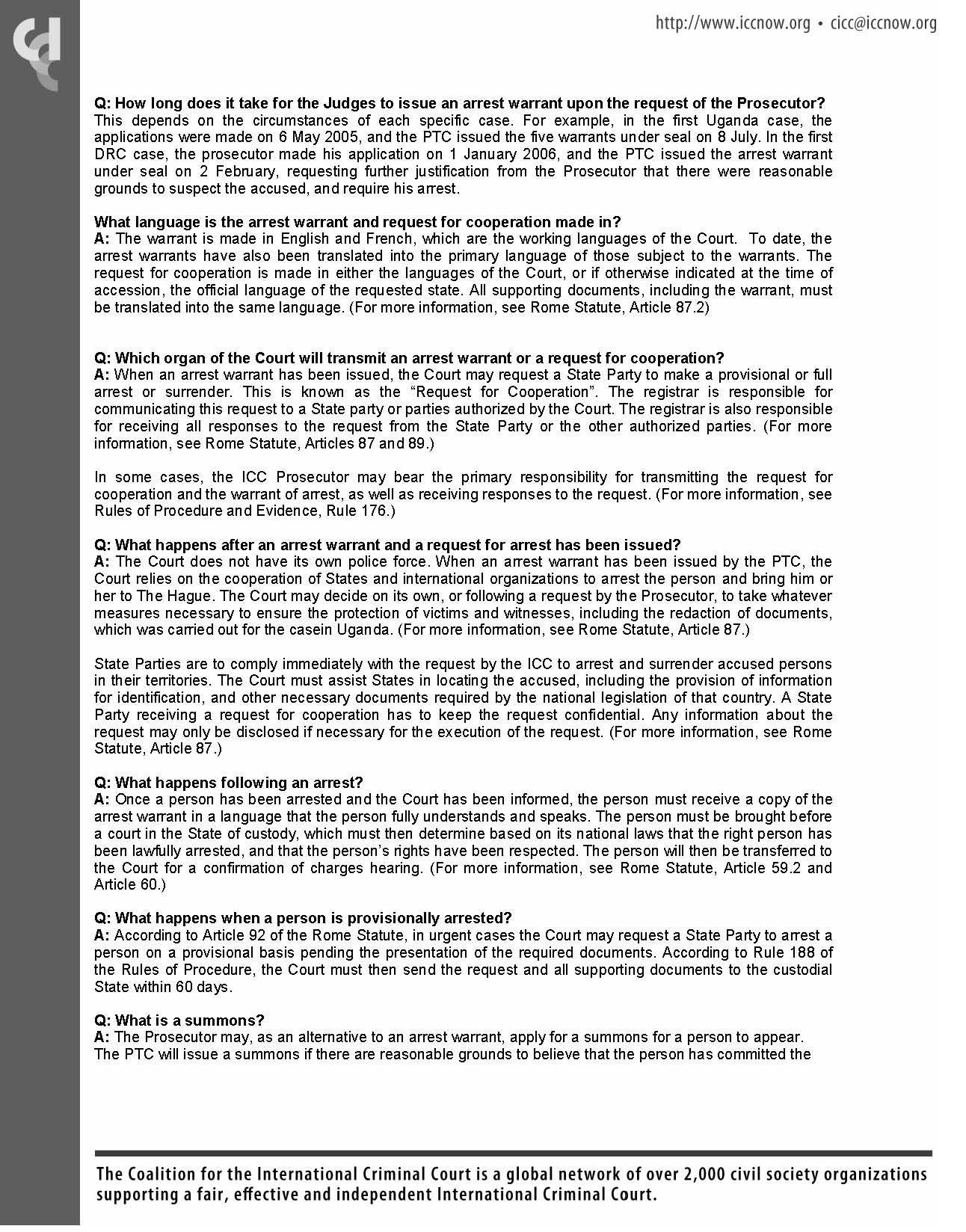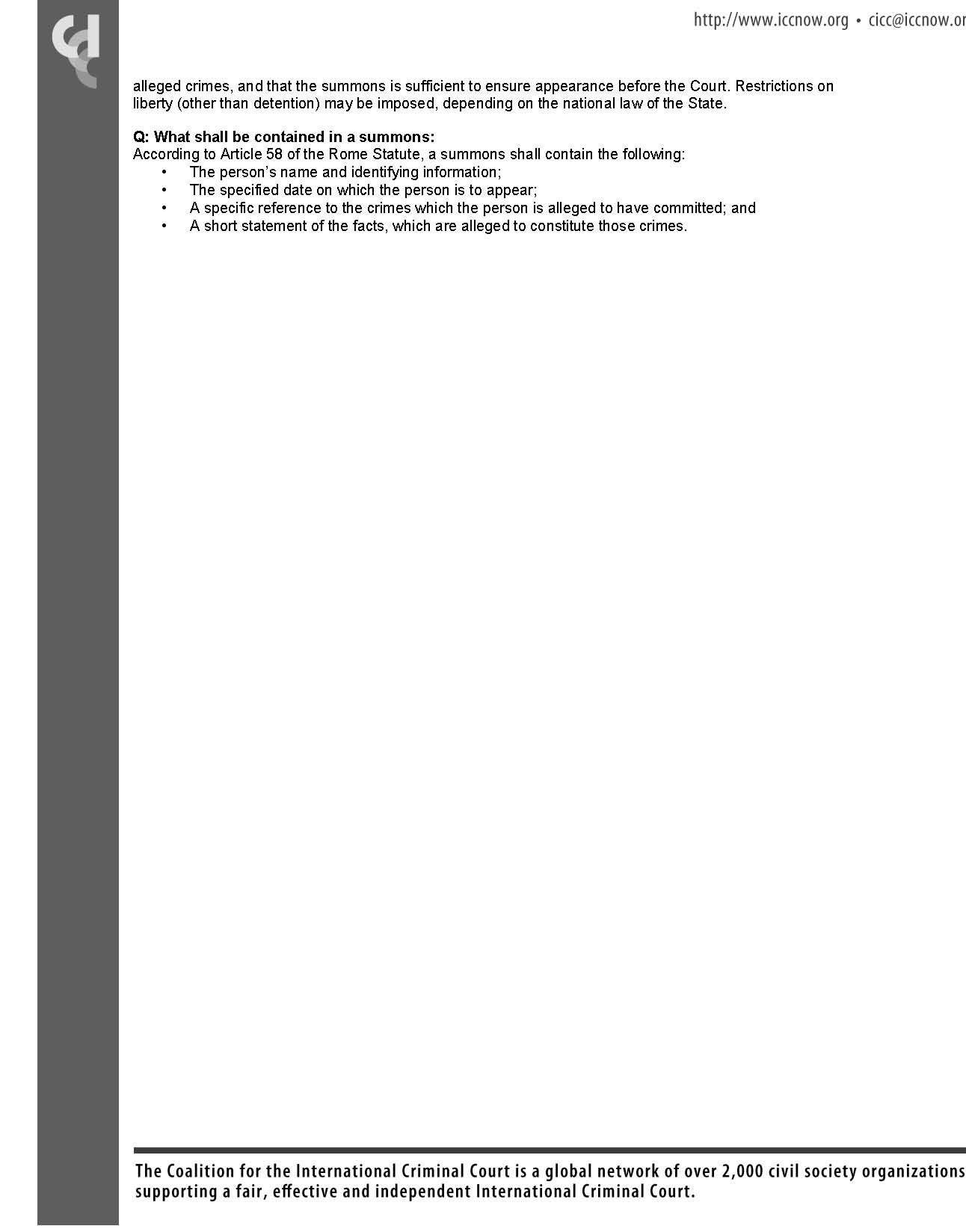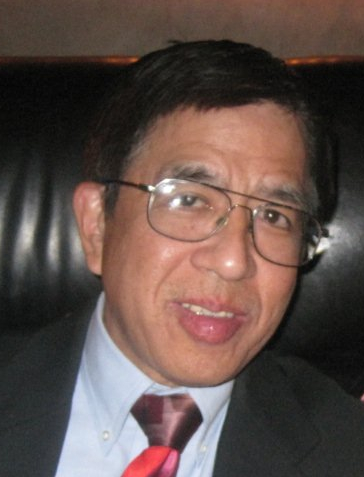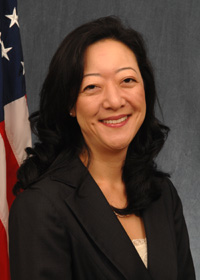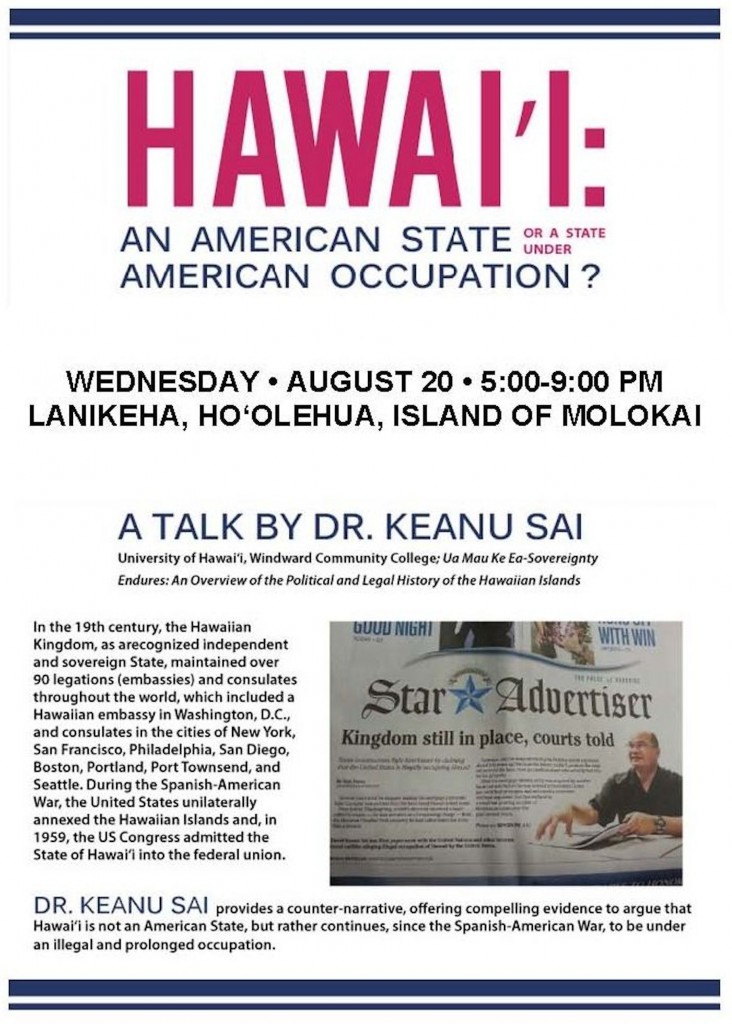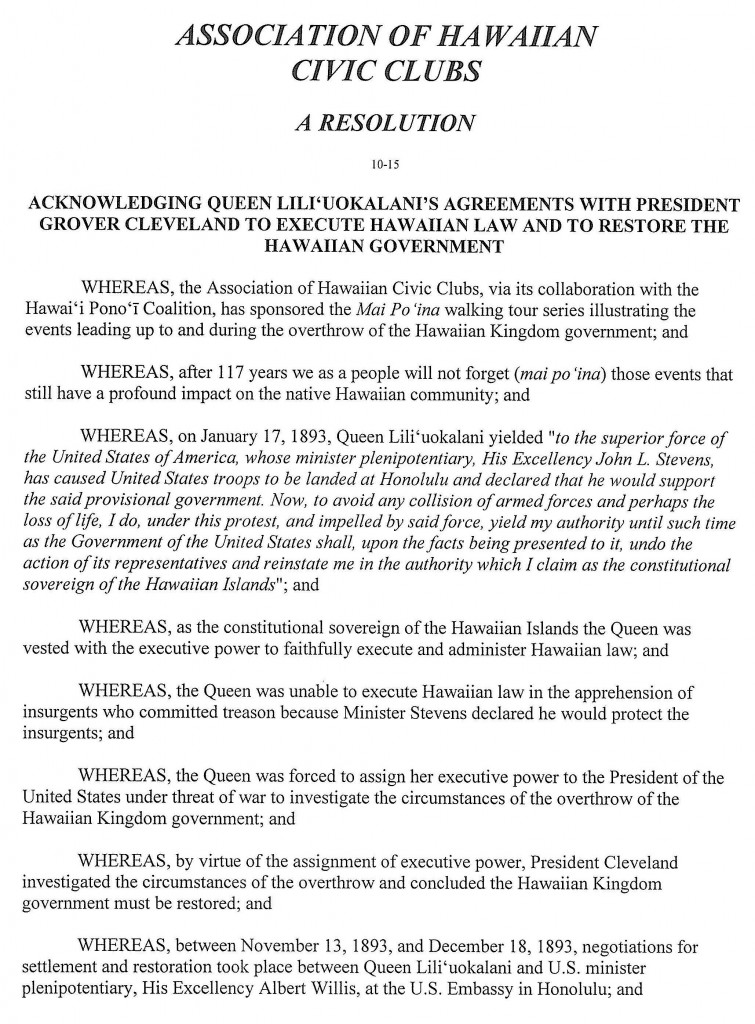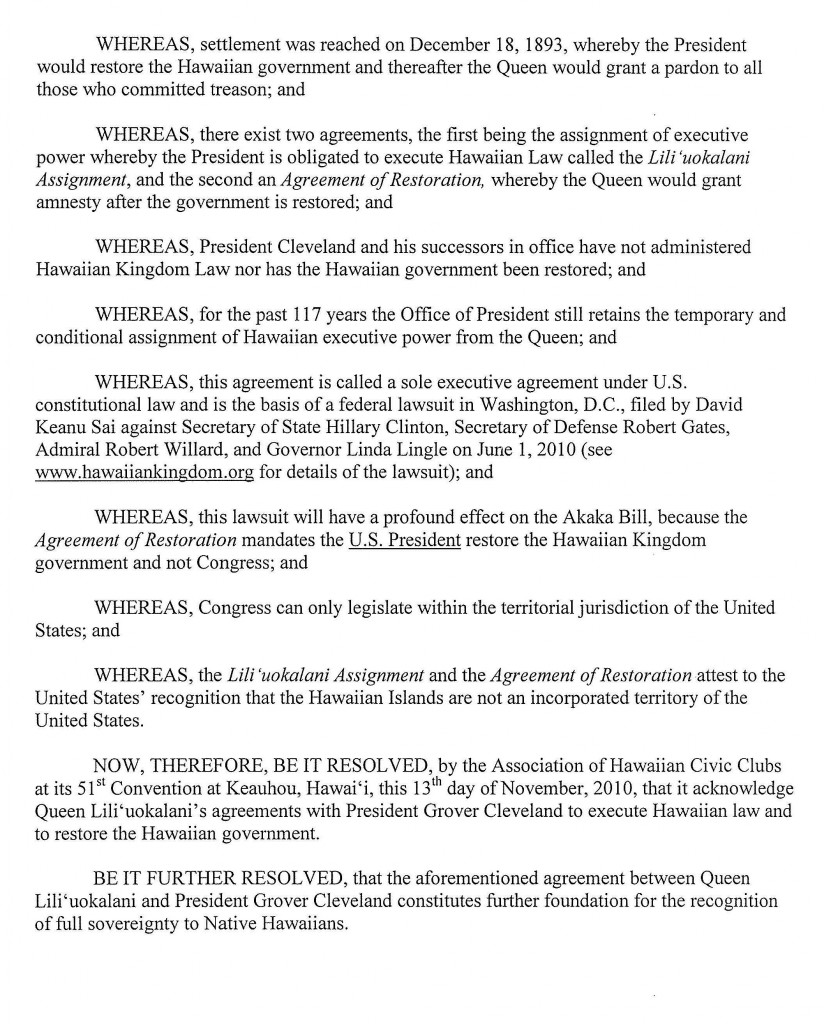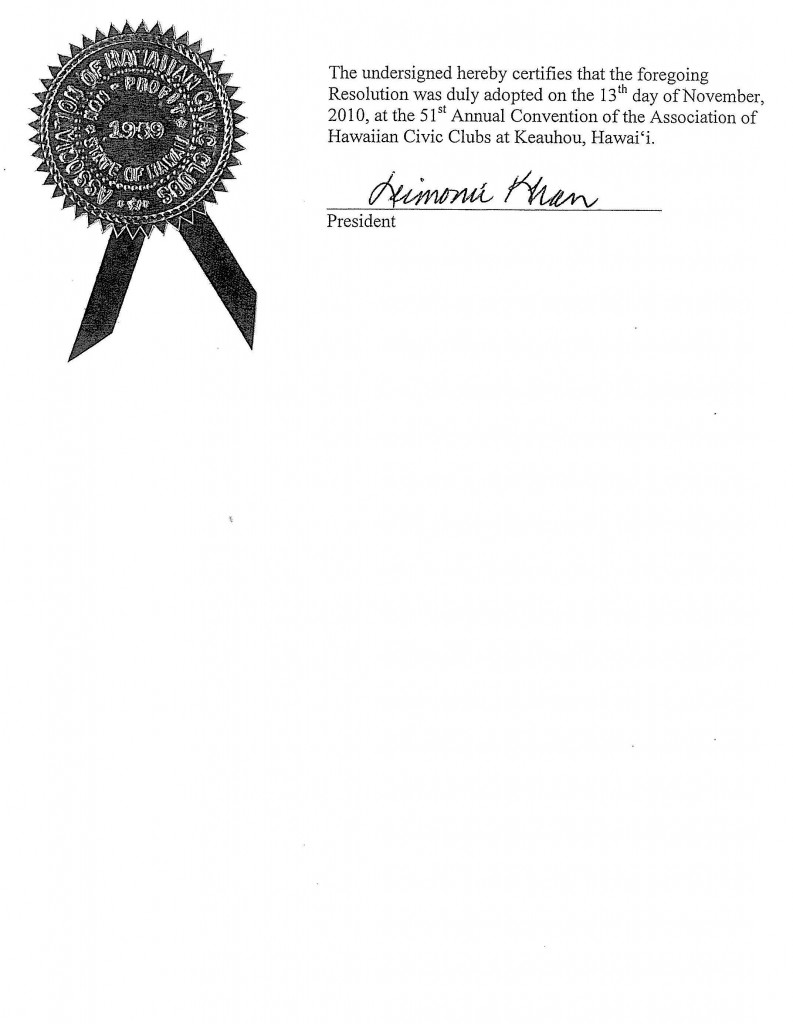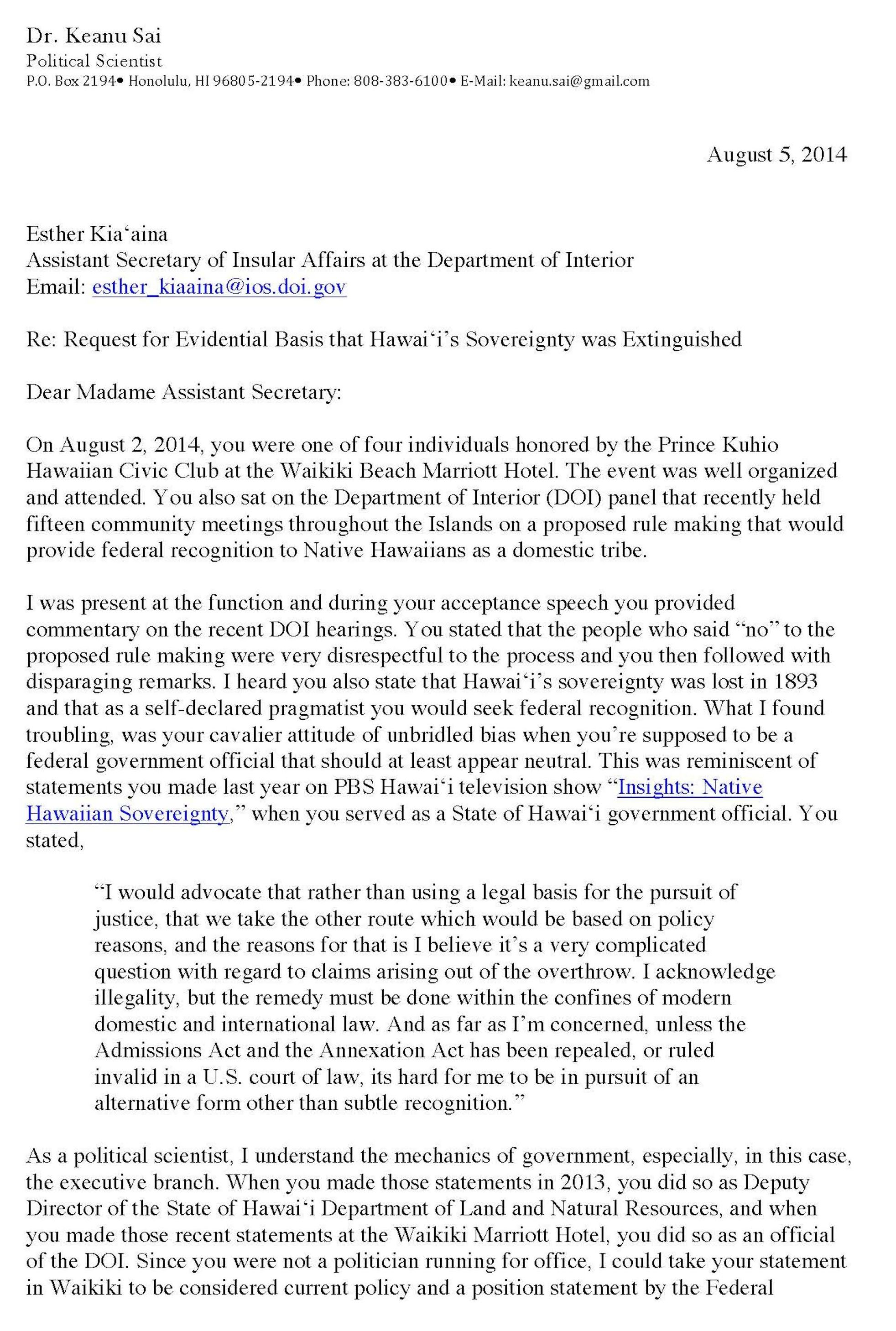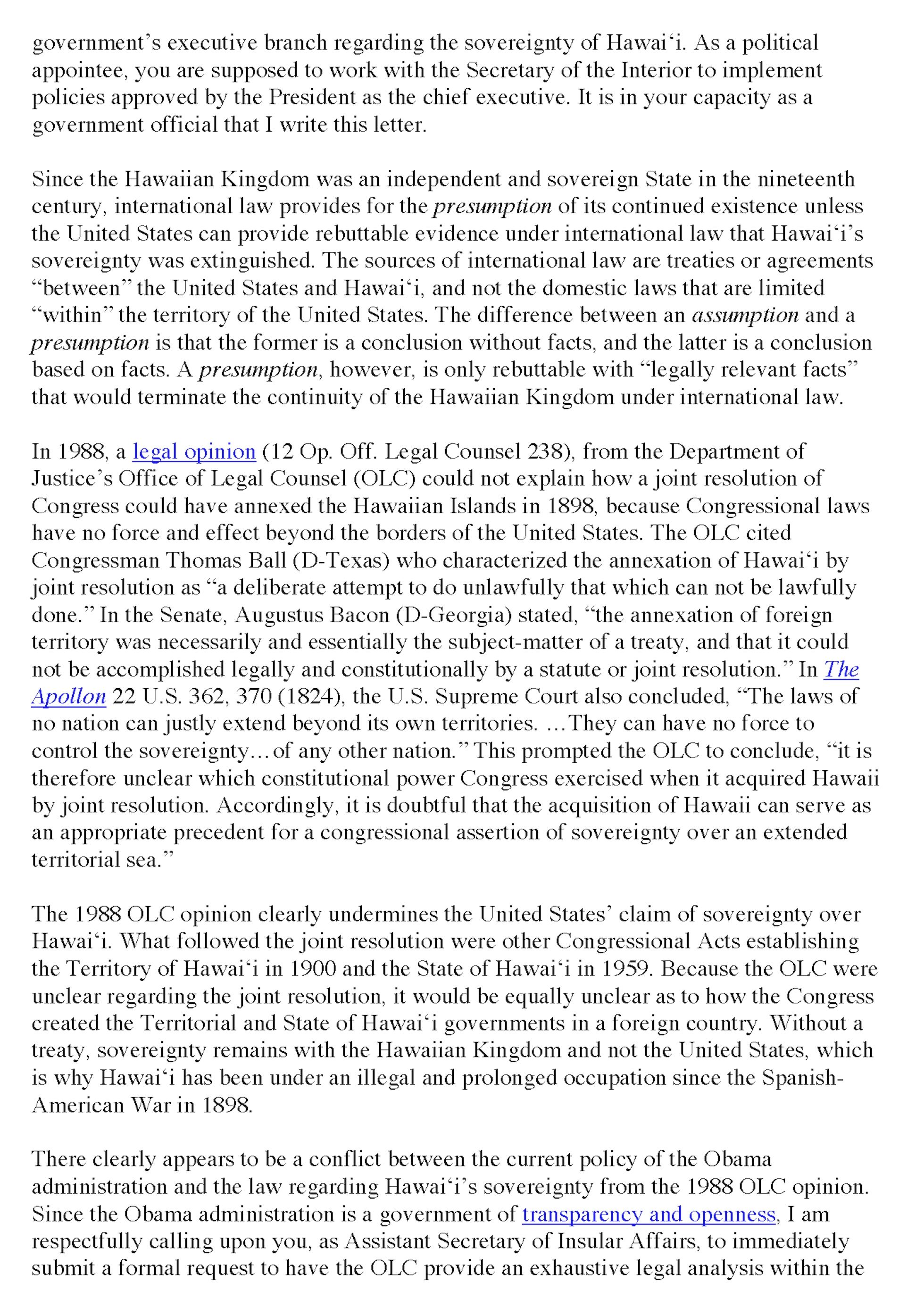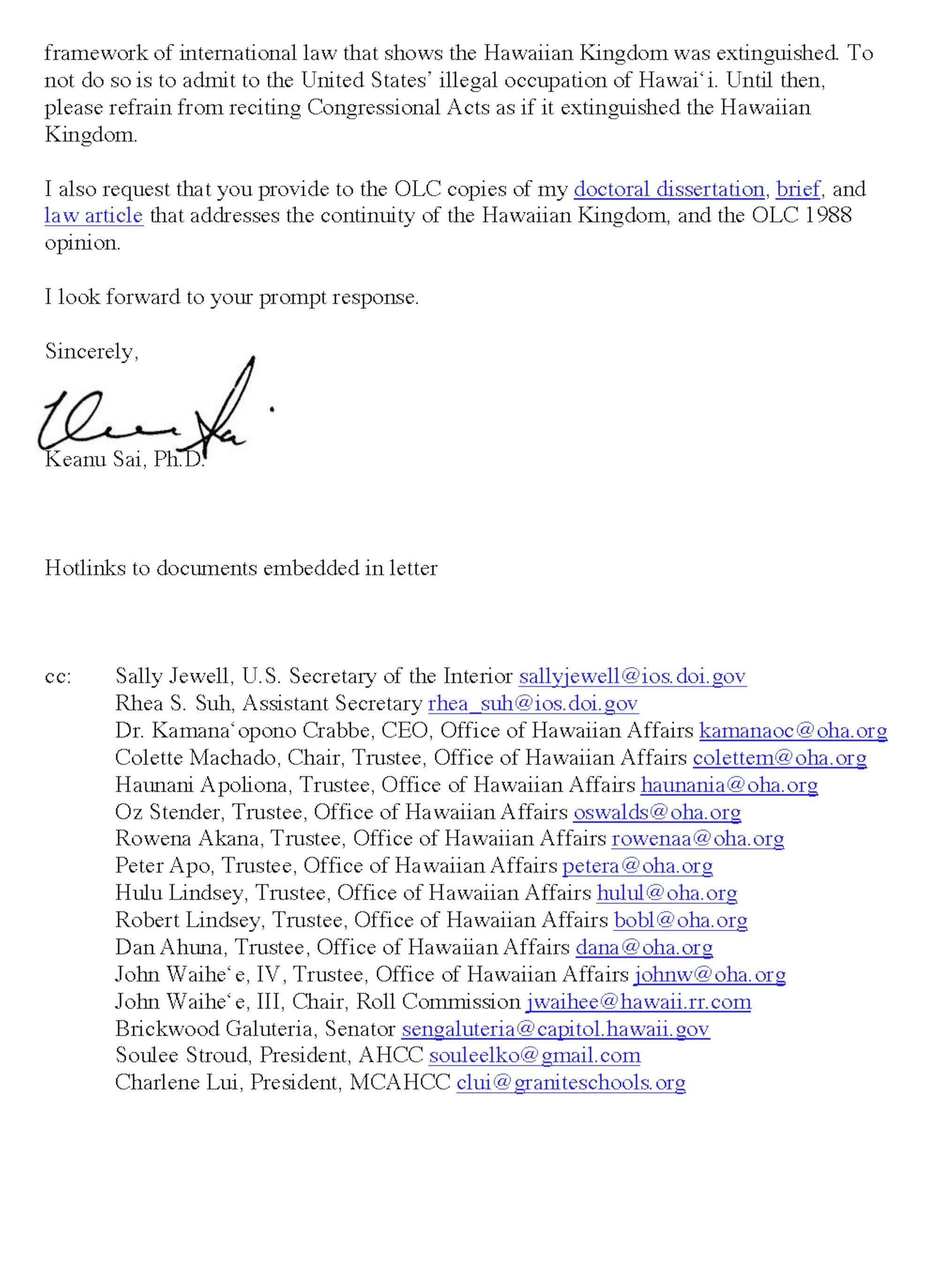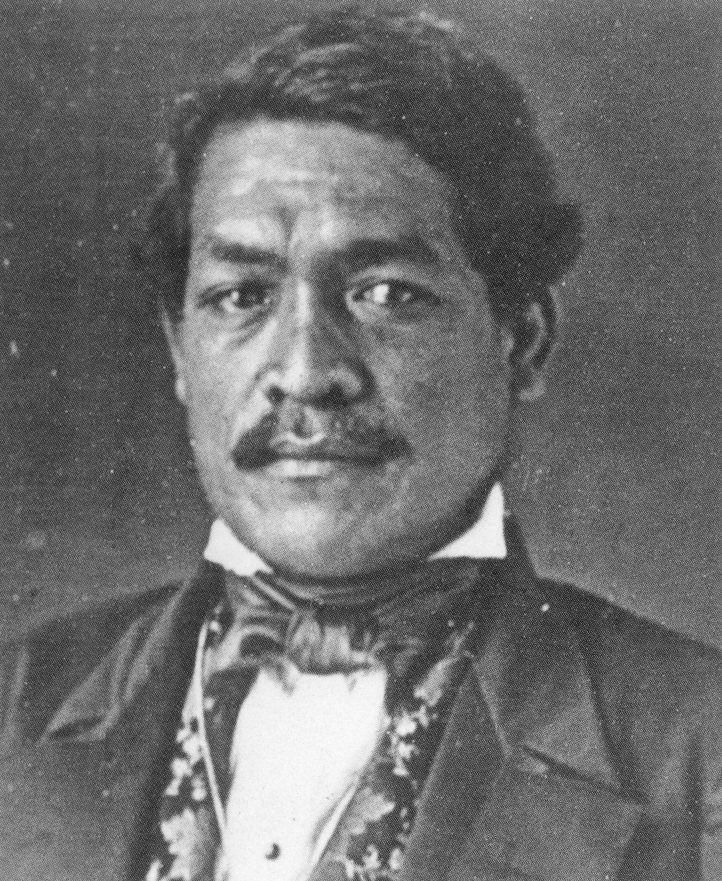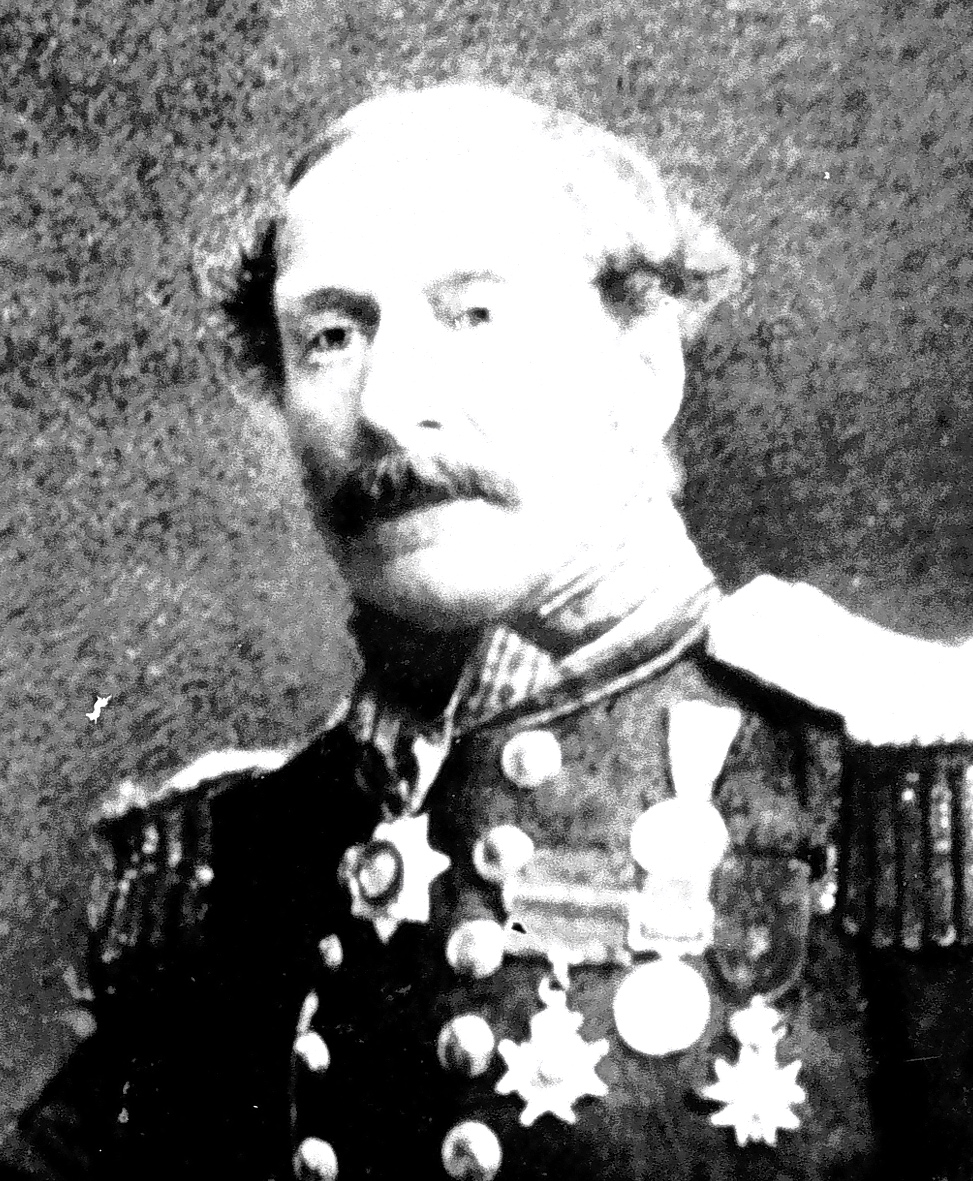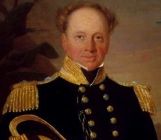During the summer of 1887, while the Legislature was out of session, a minority of subjects of the Hawaiian Kingdom and foreign nationals met to organize a revolt and take over the government. The driving motivation was their racist belief that the “native [was] unfit for government and his power must be curtailed.” The local volunteer militia, predominantly United States citizens, called themselves the Hawaiian League, and held a meeting on June 30, 1887 at the Armory building of the Honolulu Rifles. Before this meeting, members of the League had brought large caches of arms from San Francisco and distributed them to other members.
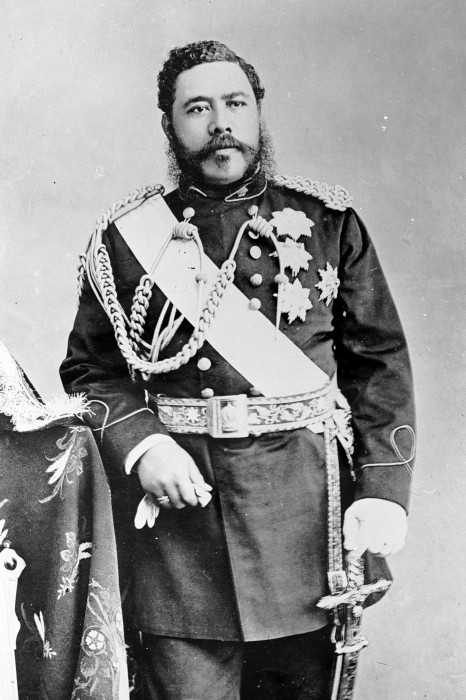 The group made demands on Kalakaua, including an immediate change of the King’s cabinet ministers. Under threat of violence, on July 1, 1887, the King reluctantly agreed to form a new cabinet ministry made up of League members. The true purpose of the League was to neutralize the power of the native vote in order to seize control of the government for their economic gain.
The group made demands on Kalakaua, including an immediate change of the King’s cabinet ministers. Under threat of violence, on July 1, 1887, the King reluctantly agreed to form a new cabinet ministry made up of League members. The true purpose of the League was to neutralize the power of the native vote in order to seize control of the government for their economic gain.
On that same day, the new cabinet comprised of William L. Green as Minister of Finance, Godfrey Brown as Minister of Foreign Affairs, Lorrin A. Thurston as Minister of the Interior, and Clarence W. Ashford as Attorney General, took “an oath to support the Constitution 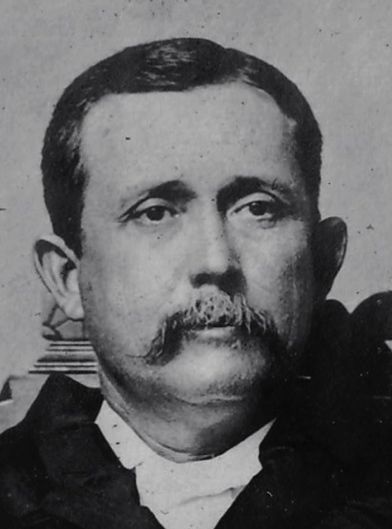 and Laws, and faithfully and impartially to discharge the duties of his office.” Under strict secrecy and unbeknownst to Kalakaua, the new ministry also invited two members of the Supreme Court, Chief Justice Albert F. Judd and Associate Justice Edward Preston, “to assist in the preparation of a new constitution,” on July 5, 1887, consequently implicating the two highest ranking judicial officers in the revolt. The Chief Justice had the following document acknowledged and signed:
and Laws, and faithfully and impartially to discharge the duties of his office.” Under strict secrecy and unbeknownst to Kalakaua, the new ministry also invited two members of the Supreme Court, Chief Justice Albert F. Judd and Associate Justice Edward Preston, “to assist in the preparation of a new constitution,” on July 5, 1887, consequently implicating the two highest ranking judicial officers in the revolt. The Chief Justice had the following document acknowledged and signed:
“Messrs. S.B. Dole and W.O. Smith and W.A. Kinney, having waited upon the undersigned with a draft of a proposed new Constitution, and having requested us to peruse the same and advise with them as to the form and text of the same, hereby state that we do so under the express understanding that we cannot and do not assent to any change in the present Constitution or to the promulgation of any new Constitution unless made in conformity with the provisions of the Constitution now in force, we having been sworn to maintain that constitution and the laws of the Kingdom and our duty being to maintain such laws, but it being presented to us that the promulgation of a new Constitution is imperatively necessary to maintain peace and order I agree to advise with such gentlemen for the purposes aforesaid.
[Signed]
A.F. Judd
Edward Preston
[Signed]
S.B. Dole
William O. Smith
W.A. Kinney”
Hawaiian constitutional law provided that any proposed change to the constitution must be submitted to the Legislative Assembly, and upon majority agreement, would be deferred to the next legislative session for action. Once the next legislature convened, and the proposed amendment or amendments were “agreed to by two-thirds of all members of the Legislative Assembly, and be approved by the King, such amendment or amendments shall become part of the Constitution of this country.”
As a minority, these individuals had no intent of submitting their draft constitution to the legislature, which was not scheduled to reconvene until 1888. Instead, they embarked on a criminal path of treason. The Penal Code defines treason “to be any plotting or attempt to dethrone or destroy the King, or the levying of war against the King’s government…the same being done by a person owing allegiance to this kingdom. Allegiance is the obedience and fidelity due to the kingdom from those under its protection.” The statute also states when actions:
“constitute the levying of war, the force must be employed or intended to be employed for the dethroning or destruction of the King or in contravention of the laws, or in opposition to the authority of the King’s government, with an intent or for an object affecting some of the branches or departments of said government generally, or affecting the enactment, repeal or enforcement of laws in general, or of some general law; or affecting the people, or the public tranquility generally; in distinction from some special intent or object affecting individuals other than the King, or a particular district.”
The draft constitution was completed on the afternoon of July 5, 1887 and Chief Justice Judd was called in to swear the King to the new constitution in the presence of the Cabinet. But before he signed it, the King asked Judd if he should carry through with his signature. Judd replied, “You must follow the advice of your responsible ministers.” Kalakaua did not know that the highest judicial officer was a co-conspirator. The 1887 Constitution was declared to be the new law of the land. The King’s sister and heir-apparent, Lili‘uokalani, discovered later that her brother had signed the constitution “because he had every assurance, short of actual demonstration, that the conspirators were ripe for revolution, and had taken measures to have him assassinated if he refused.” Charles Gulick, who served as Minister of the Interior from 1883 to 1886, also concluded:
“The ready acquiescence of the King to their demands seriously disconcerted the conspirators, as they had hoped that his refusal would have given them an excuse for deposing him, and a show of resistance a justification for assassinating him. Then everything would have been plain sailing for their little oligarchy, with a sham republican constitution.”
This constitution, known as the Bayonet Constitution, was never submitted to the Legislative Assembly. It was drafted by a select group of twenty individuals and effectively placed control of the Legislature and Cabinet in the hands of individuals who held foreign allegiances.
The constitution maintained a unicameral legislature, but the election of Nobles replaced appointments by the King. Property qualifications were reinstituted for candidates of both Nobles and Representatives. And the cabinet could only be removed by the legislature by a vote of lack of confidence. The new property qualifications ensured that Nobles would be non-natives and would control the elected Representatives.
“For the first time in the history of the country the number of nobles is made equal to the number of representatives. This furnished a veto power over the representatives of the popular vote to the nobles, who were selected by persons mostly holding foreign allegiance, and not subjects of the Kingdom. The election of a single representative by the foreign element gave to it the legislature.”
The resident foreigners of American or European nationality were allowed to cast their votes in the election of the new legislature without renouncing their foreign citizenship and allegiance. The resident foreigners included contract laborers from Portugal’s Madeira and Azores Islands who emigrated to the kingdom after 1878 under labor contracts for the sugar plantations owned by League members. Although few of these workers could read or write, League members utilized this large voting block to neutralize the native vote. According to James Blount, U.S. Special Commissioner assigned to investigate the illegal overthrow of the Hawaiian government by U.S. forces in 1893, he reported to the U.S. Secretary of State Gresham:
“These ignorant laborers were taken before the election from the cane fields in large numbers by the overseer before the proper officer to administer the oath and then carried to the polls and voted according to the will of the plantation manager. Why was this done? In the language of the Chief Justice Judd, “to balance the native vote with the Portuguese vote.” This same purpose is admitted by all persons here. Again, large numbers of Americans, Germans, English, and other foreigners unnaturalized were permitted to vote…”
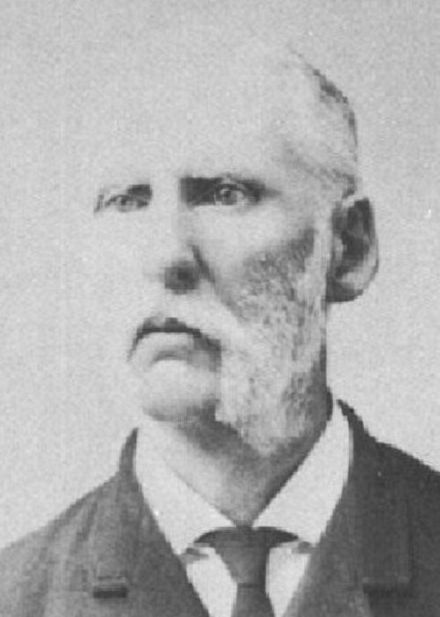 Leading up to the elections on September 12th, there was public outcry. On August 30th 1887, British Consul Wodehouse reported to the British government the new Cabinet’s response: “The new Administration which was dictated by the “Honolulu Rifles” now 300 strong does not give universal satisfaction, and…Attorney General Ashford is reported to have said ‘that they, the Administration, would carry the elections if necessary at the point of the bayonet.’”
Leading up to the elections on September 12th, there was public outcry. On August 30th 1887, British Consul Wodehouse reported to the British government the new Cabinet’s response: “The new Administration which was dictated by the “Honolulu Rifles” now 300 strong does not give universal satisfaction, and…Attorney General Ashford is reported to have said ‘that they, the Administration, would carry the elections if necessary at the point of the bayonet.’”
The election “took place with the foreign population well armed and the troops hostile to the crown and people.” James Blount also concluded that foreign ships anchored in Honolulu harbor during this time “must have restrained the native mind or indeed any mind from a resort to physical force,” and the natives’ “means of resistance was naturally what was left of political power.”
Unlike Kamehameha V, Kalakaua, as the chief executive, did not have the constitutional authority to abrogate and then subsequently promulgate a new constitution without legislative approval. The constitution of 1864 no longer had the sovereign prerogative of Article 45, thus the Crown was limited to faithfully executing Hawaiian law as the country’s chief executive.
Further restraint against sovereign authority was that the enactment of law, whether constitutional or statutory, resided solely with the Legislative Assembly together with the Crown. Article 78 of the 1864 Constitution provided that all “laws now in force in this Kingdom, shall continue and remain in full effect, until altered or repealed by the Legislature; such parts only excepted as are repugnant to this Constitution. All laws heretofore enacted, or that may hereafter be enacted, which are contrary to this Constitution, shall be null and void.”
Throughout the revolt, there was active opposition to the minority of insurgents by the Hawaiian citizenry that ranged from peaceful organized resistance to unsuccessful armed attacks. On November 22, 1888, the Hawaiian Political Association (Hui Kalai‘aina) was established with the purpose of “restoration of the constitutional system existing before June 30, 1887.” For the next five years this organization was the most persistent and influential in maintaining that the constitution of 1864, as amended, was the legal constitution of the country.
In June 1889, the Liberal Patriotic Association, a secret society, was formed “to restore the former system of government and the former rights of the king.” The following month on July 30th, the organization’s leader, Robert Wilcox, led an unsuccessful armed attack with 80 men against the cabinet ministry on the grounds of ‘Iolani Palace. Wilcox was initially indicted for treason, “but it became clear that…no native jury would convict him of that crime. The treason charge was dropped and he was brought to trial on an indictment for conspiracy.” He was tried by a native jury, which found him not guilty. Their verdict represented the native sentiment throughout the kingdom, representing eighty-five percent of the Hawaiian citizenry. In a dispatch to U.S. Secretary of State James Blaine on November 4, 1889, U.S. Minister John Stevens from the American legation in Honolulu acknowledged the significance of the verdict:
“This preponderance of native opinion in favor of Wilcox, as expressed by the native jury, fairly represented the popular native sentiment throughout these islands in regard to his effort to overthrow the present ministry and to change the constitution of 1887, so as to restore to the King the power he possessed under the former constitution.”
There is a strong argument that the actions taken by Wilcox and other members of the Liberal Patriotic Association was a lawful but unsuccessful citizen’s arrest, and not a counter-revolt as characterized by the cabinet ministry. In theory, a counter-revolt can only take place if the original revolt was successful. But if the original revolt was not successful, or in other words, the country was still in a state of revolt or unlawfulness, any action taken to apprehend or to hold accountable the original perpetrators is not a violation of the law, but rather an enforcement of the law. Under the common law, every private “person that is present when any felony is committed, is bound by the law to arrest the felon.”
According to the Hawaiian Penal Code, the “terms felony and crime, are…synonymous, and mean such offenses as are punishable with death,” which makes treason a felony. Therefore, Wilcox’s attack should be considered a failed attempt to apprehend insurgents serving in the cabinet ministry. Wilcox reinforced the theory of citizen’s arrest when he lashed out at Lorrin Thurston on the floor of the Legislative Assembly in 1890. Thurston, one of the organizers of the 1887 revolt, was an insurgent who served at the time as the Minister of the Interior.
 “Yes, Mr. Minister, with your heart ever full of venom for the people and country which nurtured you and your fathers, I say, you and such as you are the murderers. The murderers and the blood of the murdered should be placed where it belongs, with those who without warrant opened fire upon natives trying to secure a hearing of their grievances before their King.…Our object was to restore a portion of the rights taken away by force of arms from the King.… Before the Living God, I never felt this action of mine to be a rebellion against my mother land, her independence, and her rights, but (an act) for the support and strengthening of the rights of my beloved race, the rights of liberty, the rights of the Throne and the good of the beautiful flag of Hawai‘i; and if I die as a result of this my deed, it is a death of which I will be most proud, and I have hope I will never lack the help of the Heavens until all the rights are returned which have been snatched by the self-serving migrants of America.”
“Yes, Mr. Minister, with your heart ever full of venom for the people and country which nurtured you and your fathers, I say, you and such as you are the murderers. The murderers and the blood of the murdered should be placed where it belongs, with those who without warrant opened fire upon natives trying to secure a hearing of their grievances before their King.…Our object was to restore a portion of the rights taken away by force of arms from the King.… Before the Living God, I never felt this action of mine to be a rebellion against my mother land, her independence, and her rights, but (an act) for the support and strengthening of the rights of my beloved race, the rights of liberty, the rights of the Throne and the good of the beautiful flag of Hawai‘i; and if I die as a result of this my deed, it is a death of which I will be most proud, and I have hope I will never lack the help of the Heavens until all the rights are returned which have been snatched by the self-serving migrants of America.”
At the close of this tumultuous 1890 legislative session, where Hawaiian subjects stated their objections, the King’s health had deteriorated. On November 25th he departed for San Francisco on board the USS Charleston for a period of respite and designated Lili‘uokalani, his heir apparent, as Regent during his absence. King Kalakaua died in San Francisco on January 20, 1891, and his body returned to Honolulu on board the USS Charleston on the 29th.
 In a meeting of the Privy Council that afternoon, Lili‘uokalani took the oath of office, where she swore “in the presence of Almighty God, to maintain the Constitution of the Kingdom whole and inviolate, and to govern in conformity therewith.” Chief Justice Albert F. Judd administered the oath and Lili‘uokalani was thereafter proclaimed Queen. The oath did not state that she maintain the 1887 Bayonet Constitution, but rather “the Constitution.” The Bayonet Constitution was never ratified by the Legislative Assembly, so therefore it was never a constitution to begin with. The 1864 Constitution remained the constitution of the country.
In a meeting of the Privy Council that afternoon, Lili‘uokalani took the oath of office, where she swore “in the presence of Almighty God, to maintain the Constitution of the Kingdom whole and inviolate, and to govern in conformity therewith.” Chief Justice Albert F. Judd administered the oath and Lili‘uokalani was thereafter proclaimed Queen. The oath did not state that she maintain the 1887 Bayonet Constitution, but rather “the Constitution.” The Bayonet Constitution was never ratified by the Legislative Assembly, so therefore it was never a constitution to begin with. The 1864 Constitution remained the constitution of the country.
The legislative and judicial branches of government had been compromised by the revolt. The Nobles became an elected body of men whose allegiance was to the foreign population, and three of the justices of the Supreme Court, including the Chief Justice, participated in the revolt by drafting the 1887 constitution. The Queen was prevented from legally confirming her niece, Ka‘iulani Cleghorn, as heir-apparent, because the Nobles had not been in the Legislative Assembly since 1887. Article 22 of the 1864 Constitution provides that “the successor shall be the person whom the Sovereign shall appoint with the consent of the Nobles, and publicly proclaim as such during the King’s life.”
Nevertheless, Ka‘iulani, by nomination of the Queen, could be considered a de facto heir-apparent, subject to confirmation by the Nobles when they reconvened. Despite the ongoing political turmoil in the Hawaiian Kingdom, preparations were being made to celebrate fifty years of Hawaiian independence since the Anglo-French proclamation of November 28th 1843. The year 1893 marked the fiftieth anniversary of Hawai‘i as an internationally recognized independent and sovereign State.

